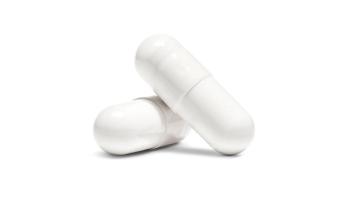
- Pharmaceutical Technology-10-01-2019
- Volume 2019 Supplement
- Issue 5
Uncovering Hidden Risks in Solid-State API Properties
An understanding-during early development-of the solid form landscape of an API can enhance product quality and manufacturing processes.
Editor’s note: A version of this article was published in Pharmaceutical Technology Europe’s APIs, Excipients, and Manufacturing 2019 Supplement.
In the manufacture of small-molecule APIs, developers must be wary of the phenomenon of polymorphism, where an organic molecule can adopt a number of crystalline forms. Controlling the solid form of an API is a critical step in ensuring manufacturing control, as the uncontrolled occurrence of polymorphs can affect the filtration and drying characteristics during the synthesis, as well as the drug’s formulation, long-term stability, and solubility properties.
The drug ritonavir had to be temporarily withdrawn from the market following launch, after a less-soluble polymorph that caused the drug to have much reduced therapeutic effect was discovered (1). Production of the drug was halted until a new formulation of the drug was developed, causing disruption to patients, as well as having financial consequences for manufacturers.
A number of strategies can be employed to control the polymorphic form during manufacturing. These strategies include seeding-where a small amount of the desired polymorphic form is introduced to promote crystallization of that form via nucleation-and screening for and choosing an appropriate solvent to perform the crystallization step. In another method, crystallization control, the crystallization is designed with the use of a quality-by-design (QbD) procedure and monitored using process analytical tools (PAT) to ensure it is robust and predictable during changes to temperature, solvent composition/anti-solvent addition, or agitation rates.
In all cases, the key step in delivering the desired solid form of an API is understanding and characterizing the polymorphic landscape to identify and predict phase transitions.
Hydrate formation and associated risks
Due to the ubiquitous nature of water vapour, hydrates are often very stable under ambient conditions. It is estimated that up to 75% of all pharmaceuticals are affected by hydrate formation (2), which has a direct effect on the physical properties of the API, and subsequently how a drug will eventually perform in vivo, in terms of stability, solubility, and bioavailability.
Hydrate formation can become apparent at any stage of development or manufacturing operations; specific steps can be taken to avoid this, but only once the hydrate has been understood. The risk of hydrate formation is increased upon formation of ionic species (salts) or a molecule having polar functional groups such as carbonyl, hydroxyl, or amino functionalities.
Studies to predict polymorphism and hydrate formation are possible using computational methods and correlate well with experimental data (3–5). Standard techniques for characterization are shown in Table I.
Once the studies are complete, the results offer crucial structural data on the solid forms, allowing crystallization development to be undertaken to enhance particle morphologies and give better control over the solid forms as the product progresses through scale up and development. Avoiding hydrate formation allows efficient large-scale manufacturing, yielding an API with good handling and processing properties, as well as being optimized for the formulation of patient-ready dose forms.
Case study: Locating and understanding hydrated forms of an API
As discussed, facile hydrate formation can drastically alter the processability, stability, and aqueous solubility of a given API, and this example shows how an API was fully characterized to allow the development of a reliable method for synthesis, avoiding an undesirable hemi-hydrated form that was uncovered during a polymorph screening project.
Upon arrival, the single-crystal structure of the preferred polymorphic form, Form 1, was determined wherein the structure was found to be close-packed with normal density (1.3 g/cm3) and no solvent/water accessible voids. Similarly, thermal gravimetric analysis (TGA) confirmed the anhydrous, non-solvated nature of the form, while analysis by dynamic vapour sorption (DVS) at 25 °C, showed minor hysteresis with a maximum mass uptake of 0.95 wt.% at 90% relative humidity (RH), confirming its status as a developable form (Figure 1).
During further screening, it became apparent that the changes in water activity could promote morphological changes in the API. As shown in Figure 2, when slurried in alcohol:water systems of varying water activity (Aw), the morphology changed from an irregular morphology at 0.1 Aw to a plate-like morphology at 0.3 Aw and finally, to a rod-like morphology at 0.9 Aw. It was noted that at 0.5 Aw, a mixed morphology was apparent, comprised of both plates and rods, which indicated that competing growth kinetics that could be exploited to maximize processability and filterability of the API at a later stage of the development programme.
Investigation into the solid form recovered at high water activity (0.9 Aw) by X-ray powder diffraction (XRPD) showed that this was a novel form, herein denoted as Form 2, and found to be hemi-hydrated when characterized by TGA and Karl Fisher titration.
To properly de-risk the novel, hemi-hydrated Form 2, a suitable sample was characterized by DVS, which showed that the input Form 2 was stable between 10–90% RH, but dehydrated rapidly below 10% RH, forming a novel anhydrous species, Form 3 (Figure 3). When the relative humidity at 25 °C was cycled back to 40% RH, Form 3 prevailed, but rapidly rehydrated when cycled to 50% RH. These observations highlighted significant risk with development of the hemi-hydrated species for two reasons: the structure of the hemi-hydrated form collapsed on dehydration, forming a novel, anhydrous form; and upon rehydration, Form 3 collapsed and became amorphous prior to re-crystallizing to Form 2.
Variable humidity X-ray diffraction confirmed this observation. It was seen that within the window 30–70% RH, re-hydration of Form 3 to Form 2 was facile, and predictable, but proceeded via an increase in amorphous content (Figure 4), significantly heightening the risk associated with the development of either Forms 2 or 3. Based on the evidence, it was clear that the anhydrous Form 1 was the most desirable form for further development. However, to understand the conditions under which Form 1 would prevail, competitive slurry experiments were performed on Form 1 (anhydrous), Form 2 (hemi-hydrate) and Form 3 (anhydrous) in process relevant media. These experiments clearly showed Form 1 to be the preferred, thermodynamic form under anhydrous conditions for further development.
Despite being the thermo-dynamically preferred form, a key disadvantage for the development of Form 1 was found to be its poor particle morphology. During the screening studies, however, morphological differences were noticed due to competing crystal growth kinetics in systems containing varying water activity. Using the non-random two-liquid (NRTL) equation and measured water activity, a detailed hydration map was investigated across multiple organic solvents; it was found that the morphology of Form 1 was greatly improved using small volume aliquots of water in ICH class 3 solvents (e.g., 0.5 Aw = 95 % isopropanol : 5 % water, % v/v) to minimize the risk of hemi-hydrate formation. This vast improvement in particle morphology was exemplified by scanning electron microscopy (SEM) as shown in Figure 5.
The significant increase in particle size coincided with an increase in crystallinity and improvement in material handling properties, specifically with respect to flowability and bulk density. Once the preferred Form 1 was isolated with improved particle morphology, crystallization development was able to be undertaken to carry the compound forward by thoroughly investigating the metastable zone and understanding the critical process parameters of the isolation step directly from solution using a design of experiments approach.
De-risking the solid form landscape of an API early in development is of utmost importance to ensure success as a viable drug candidate. By controlling the solid-state properties of an API, downstream processing and manufacture will benefit from predictable stability, solubility, and bioavailability, minimizing development timelines and cost. This case study exemplified the risk that hidden hydrates may pose to process development, but when the solid form landscape is thoroughly investigated and stringently controlled, significant advantages in particle control may be realized.
References
1. J. Bauer, et. al., Pharmaceutical Research, 18 (6) 859–866 (2001).
2. L. Infantes, et. al., CrystEngComm, 5 (85) 480-486 (2003).
3. D. E. Braun, et. al., Cryst. Growth Des., 14 (4), 2056-2072 (2014).
4. D. E. Braun, et. al., Mol. Pharmaceut., 12 (8), 3069-3088 (2015).
5. S.L. Price, et. al., Chem. Commun., 44, 7076-7077 (2016).
About the author
Jonathan Loughrey is head of screening, Cambrex Edinburgh.
Article Details
Pharmaceutical Technology
Supplement: APIs, Excipients, and Manufacturing
October 2019
Pages: s24–s28
Citation
When referring to this article, please cite it as J. Loughrey, “Uncovering Hidden Risks in Solid-State API Properties," Pharmaceutical Technology APIs, Excipients, and Manufacturing Supplement (October 2019).
Articles in this issue
about 6 years ago
How Excipient Type Influences Self-Emulsifying Drug Deliveryabout 6 years ago
Advancements in Encapsulation Technologyabout 6 years ago
Additives and Processing Aids in Pharmaceutical Excipientsabout 6 years ago
Planning a Successful API Procurement Strategyabout 6 years ago
Market Dynamics Drive the Agenda for CPhI WorldwideNewsletter
Get the essential updates shaping the future of pharma manufacturing and compliance—subscribe today to Pharmaceutical Technology and never miss a breakthrough.





